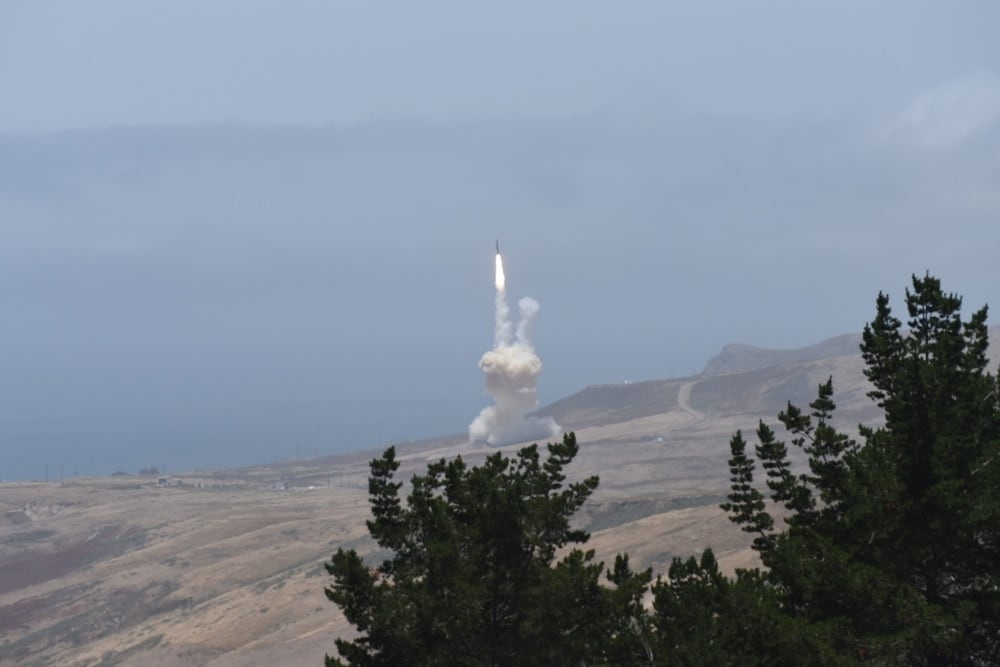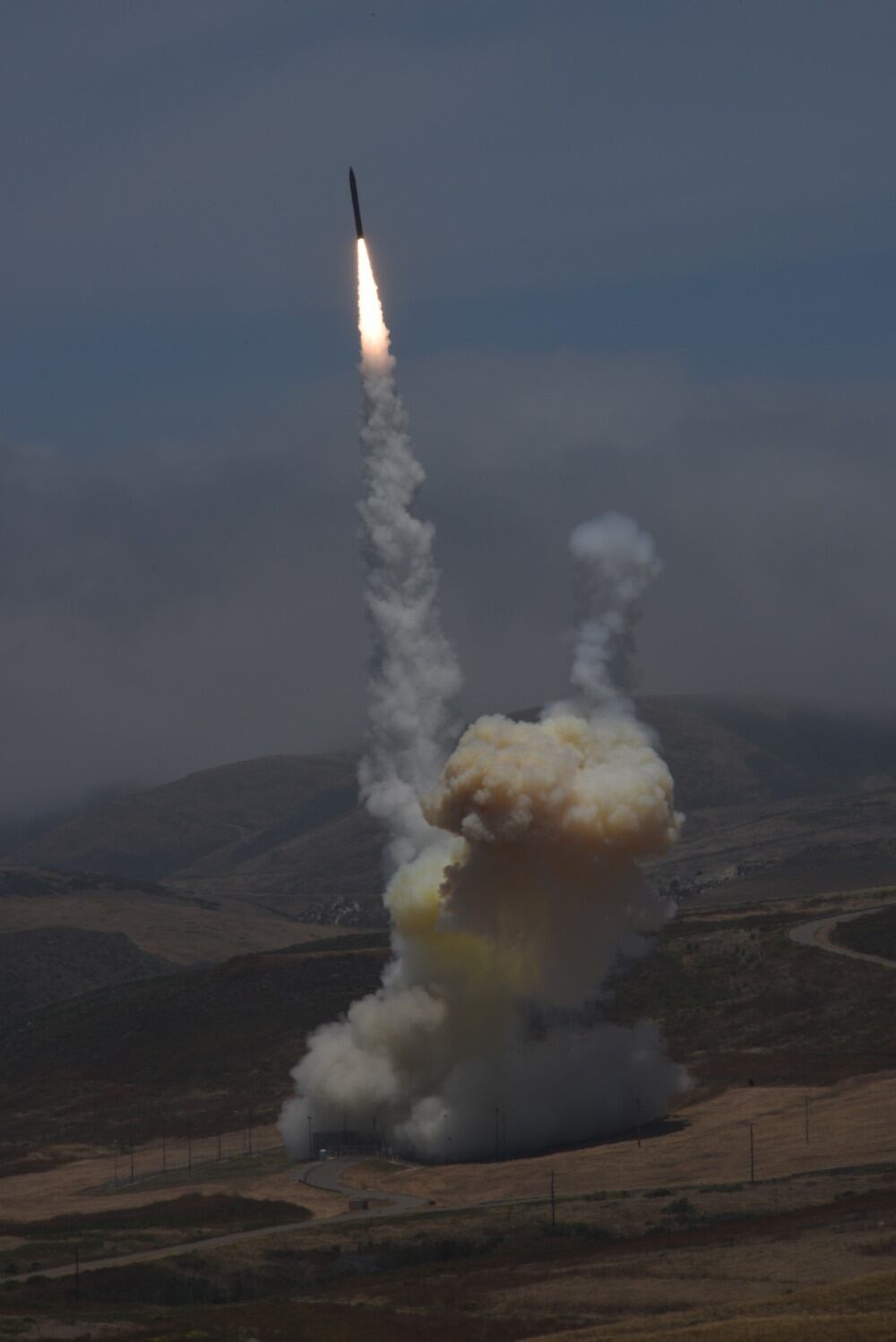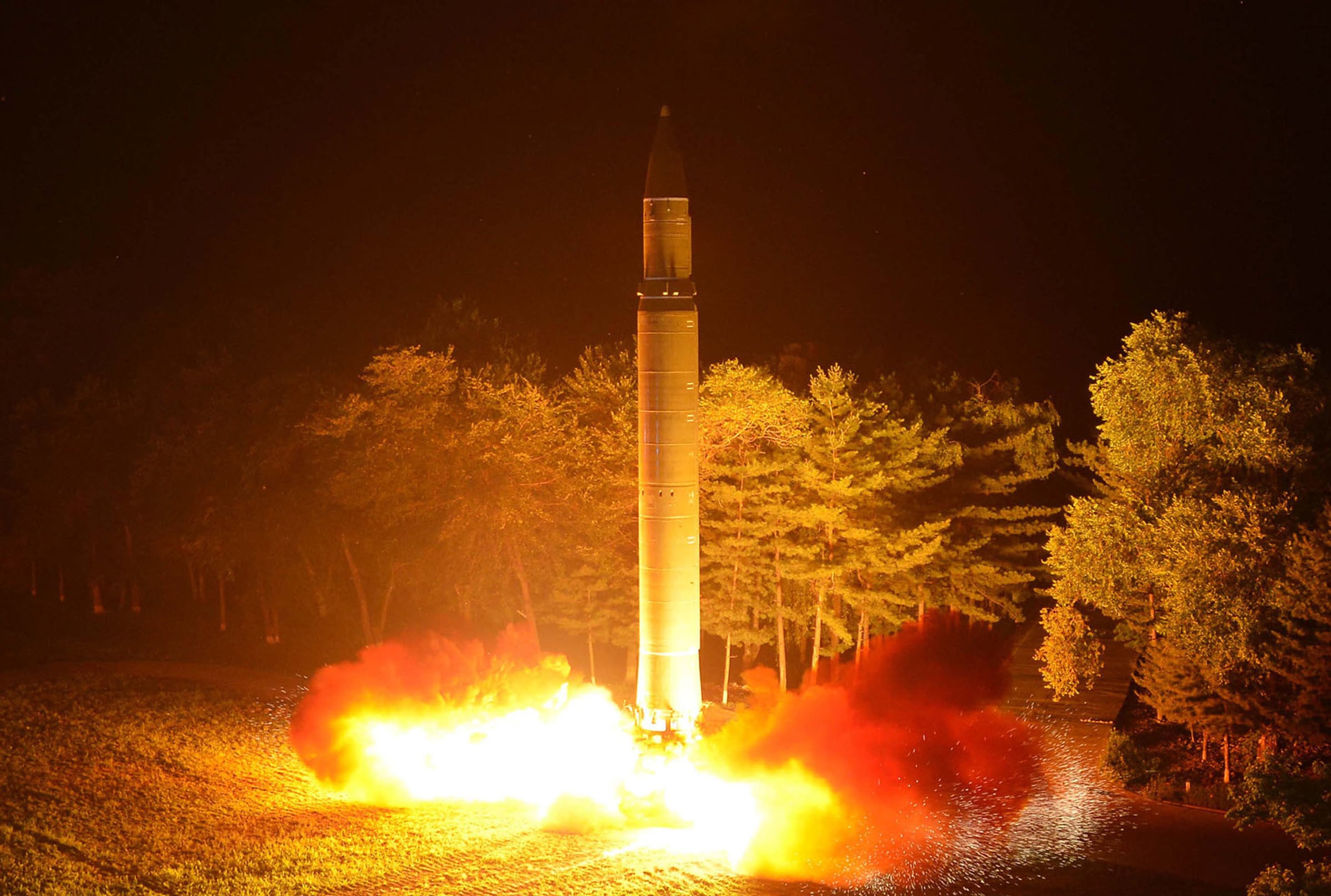WASHINGTON — The U.S. Missile Defense Agency’s $9.9 billion fiscal 2019 budget request is up by $2 billion over last year’s, in part to address a rapidly emerging threat from North Korea.
MDA is beefing up its homeland missile defense system — the Ground-based Midcourse Defense (GMD) system — with increased interceptors while adding radars to the Pacific to scan for threats. And MDA will invest in technology development to counter increasingly challenging threats such as hypersonic weapons, according to budget documents released Feb. 12.
North Korea is developing a long-range, nuclear-armed missile that would be capable of posing a threat to the United States. Just last year, the country launched two Hwasong-14 intercontinental ballistic missiles that landed in the Sea of Japan. It also fired off the larger Hwasong-15 ICBM that could reach all of the continental United States, if it could fly at a lower trajectory.
Click here for more on President Trump’s FY19 budget!
North Korea is also developing a submarine-launched ballistic missile and has hundreds of Scud and No Dong missiles that can hit U.S. forces deployed in the region as well as U.S. allies.
The FY19 request supports the National Defense Strategy, which directs investments to include a focus on layered missile defense and disruptive capabilities for both homeland and regional defense against threats from such places as North Korea, according to Gary Pennett, MDA’s director of operations, who spoke to reporters at a budget briefing at the Pentagon on Feb. 12.
While there are many significant changes in the FY19 budget request compared to last year’s, it also continues to focus “on increasing system reliability,” Pennett said. “This year we have also made significant advancements in our engagement capability and capacity while at the same time continuing to do the research and development necessary to stay ahead of the evolving threat.”
The budget also likely reflects what is in the Missile Defense Review, ordered by Defense Secretary Jim Mattis last year, which is expected to be released eminently.
RELATED

Defending the homeland
Within the FY19 MDA request are plans to design and build two discriminating radars in the Pacific. One radar will be located in Hawaii and another somewhere else in the Pacific.
MDA is requesting $95.8 million for the radar program.
“One of the things that we need to do is maintain custody of the threat from birth to death, and so with terrestrial-based radars we have to put them in locations that we can maintain custody,” Pennett explained. Therefore, the MDA decided to put a radar in Hawaii and also another one somewhere in the Pacific to provide that coverage.
MDA is calling the first radar the Homeland Defense Radar-Hawaii, or HDR-H, which will optimize “discrimination capability in the Pacific architecture” and increase “the ability of [ground-based interceptors] GBIs to enhance the defense of Hawaii,” according to budget documents. GBIs are the interceptors for the GMD system located in both Fort Greely, Alaska, and Vandenberg Air Force Base, California, to protect the homeland against ICBM threats from North Korea and Iran.
MDA will competitively award the Hawaiian radar by the end of FY18, which is in line with its plans indicated in last year’s budget request. The HDR-H will be fielded in FY23 and integrated into the ballistic missile defense system framework. Military construction for the radar will begin in FY21.
The agency will also initiate a prime contract award and development engineering for a Homeland Defense Radar-Pacific, or HDR-P, in fiscal 2019. Site surveys on possible locations for the radar will happen in FY19, according to Pennett. Site options have yet to be narrowed down. Military construction is planned for FY22 with fielding expected in FY24.
As anticipated, the GMD system is getting a major boost — a total of $926.4 million in FY19 — with funding for 20 GBIs beyond the 44 already in place at Fort Greely and Vandenberg. The additional GBIs were requested by the Pentagon and the Trump administration and ultimately mandated by Congress in 2017.
The plan is to bring the total number of GBIs to 64 by 2023. MDA is also requesting funds to add two silos in a missile field and purchase six additional configuration 2 boost vehicles for the GBIs.
MDA is requesting $561.2 million to develop the Redesigned Kill Vehicle for GBIs. The RKV will increase the performance of the current exoatmospheric kill vehicle, or EKV, which has struggled in testing.
The EKV is a component of the GMD interceptors designed to destroy targets in high-speed collisions after separating from the booster rocket. While it was previously expected for the RKV to deploy in the 2020 time frame, MDA notes in budget documents that it expects the RKV to deploy in the 2021 time frame.
GMD will have another robust test in FY19, and MDA is asking for $81.9 million in FY19 for GMD testing to include the major test. The test in FY19, as Defense News previously reported, will be a salvo test where two GBIs will go up against an ICBM-level threat target.
RELATED

MDA is planning to take receipt of Long Range Discrimination Radar hardware in FY19. Initial fielding will begin in 2020, leading up to an operational readiness test in 2022. The Long Range Discrimination Radar is a midcourse sensor that improves the discrimination capability of the ballistic missile defense system.
The agency is also asking for $149.7 million to extend the at-sea time of the sea-based X-band (SBX) radar in light of the increased missile threat from North Korea. According to Pennett, MDA is well on its way to increasing SBX time at sea from 120 days to 330 days, which was requested in last year’s budget.
However, in the FY18 request, MDA planned to examine the feasibility of deploying an SBX radar somewhere along the East Coast, and Pennett noted it is not something MDA is pursuing at the moment.
Regional defense
MDA is well on its way to implementing an Obama-era regional missile defense strategy known as the European Phased Adaptive Approach. MDA has an AN/TPY-2 radar deployed in Turkey, but is also standing up two Aegis Ashore missile defense sites in Romania and Poland. Romania’s is mission capable and Poland’s will be operational in FY18. The final phase will include delivering the Standard Missile-3 Block IIA to Aegis weapons systems and Aegis Ashore sites.
MDA is asking for $767.5 million for the Aegis BMD program to include integration of the SM-3 Block IIA. And the agency wants another $95.8 million for Aegis BMD testing.
The agency wants to spend $708.7 million to procure 37 SM-3 Block IB missiles and six SM-3 IIA missiles. Across the five-year budget plan, MDA wants to buy 204 SM-3 IB missiles and 39 SM-3 IIA missiles.
RELATED

The Terminal High Altitude Area Defense System program would get $214.2 million for software upgrades to address emerging threats. The agency wants to address specific efforts associated with a U.S. Forces Korea urgent need that “provides enhance[d] THAAD capability against specific USFK threats.” Among those enhancements is a capability to “increase” THAAD’s “defended area,” according to budget documents. The description implies the funding could go toward the much-talked-about THAAD Extended Range, a possible upgrade that has yet to become an official requirement or effort.
MDA also plans to boost its THAAD interceptor procurement, asking for $874.1 million to procure 82 interceptors for a total buy of 196 interceptors across the five-year defense spending plan.
Technology development
MDA plans to tackle how to defend against hypersonic threats, which are emerging in countries considered by the U.S. to be adversaries, such as China and Russia.
The agency wants $120.4 million to make near-term sensor and control capability upgrades that can help defend against such threats. The plan will follow the Defense Science Board’s recommendations to develop and deliver “material solutions” informed by near-term technology demonstrations, according to the budget documents.
Solutions will include modification of existing BMDS sensors and the Command and Control, Battle Management and Communication system ― the network that ties together elements of the BMD system.
MDA will continue to work toward putting a laser on a UAV to address boost phase missile defense risks.
The Common Kill Vehicle program will get $189.8 million to develop technology capable of killing multiple threats from a single interceptor. MDA has awarded contracts to three major prime contractors to reduce the technical risk for the Multi-Object Kill Vehicle product development.
Space capability development crops up in the FY19 request, but despite pushes from Congress and other experts, the funding for space-based missile defense has not seen much of a boost, according to budget overview documents.
RELATED

The MDA is asking for $16.5 million for the Space-based Kill Assessment, or SKA, experiment, “which will use a network of high sample rate, infrared sensors to deliver a kill assessment capability to the BMDS tailored for homeland defense,” the document reads. The FY18 request saw similar funding ― a total of $17 million.
The FY18 request also stated that the full SKA network was planned to be on orbit in FY17. The FY19 request says the network would be on orbit in FY18. Pennett said there have been some delays “in regards to getting the satellites up.”
The only other program highlighted for space-related efforts is the Space Tracking and Surveillance System.
MDA is requesting $37 million for satellite operations and sustainment. The Space Tracking and Surveillance Systems were launched in 2007 and continue to perform well, providing risk-reduction data for potential operational BMDS tracking and surveillance constellation, according to the budget overview. The program will also support “concept development activities for future space sensor architecture studies and analyses to address advanced threats,” the document states.
Jen Judson is an award-winning journalist covering land warfare for Defense News. She has also worked for Politico and Inside Defense. She holds a Master of Science degree in journalism from Boston University and a Bachelor of Arts degree from Kenyon College.







